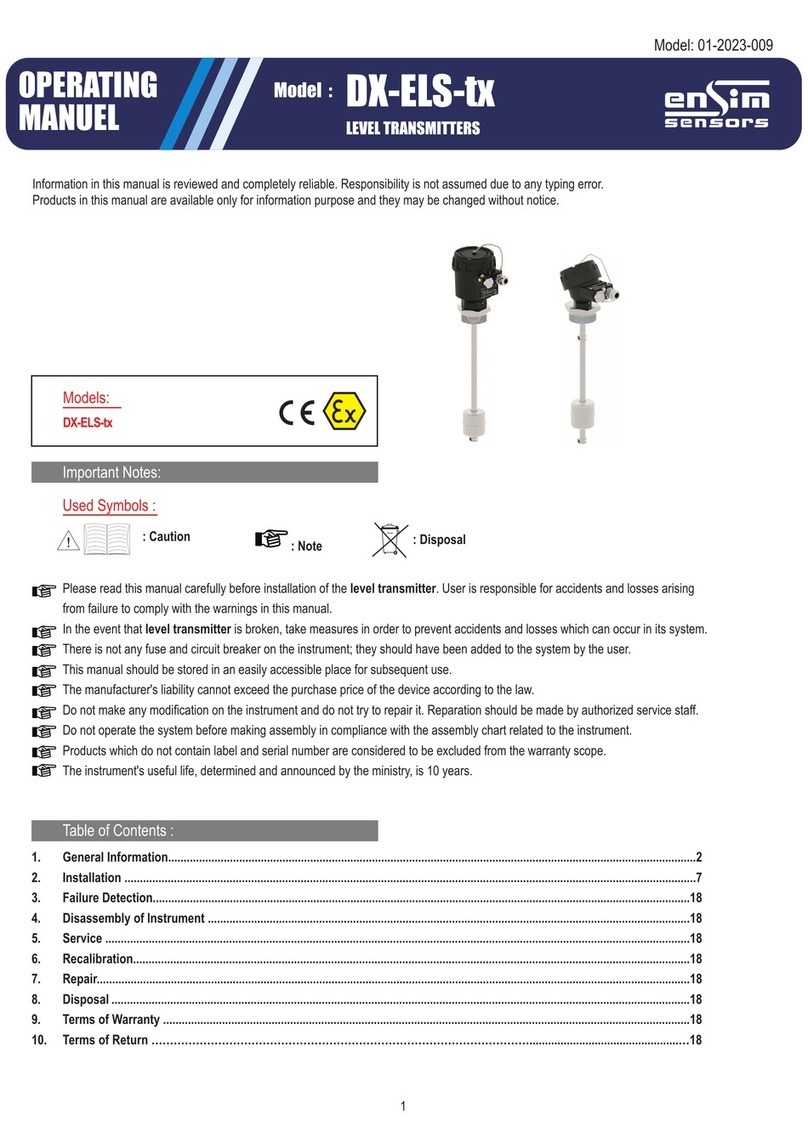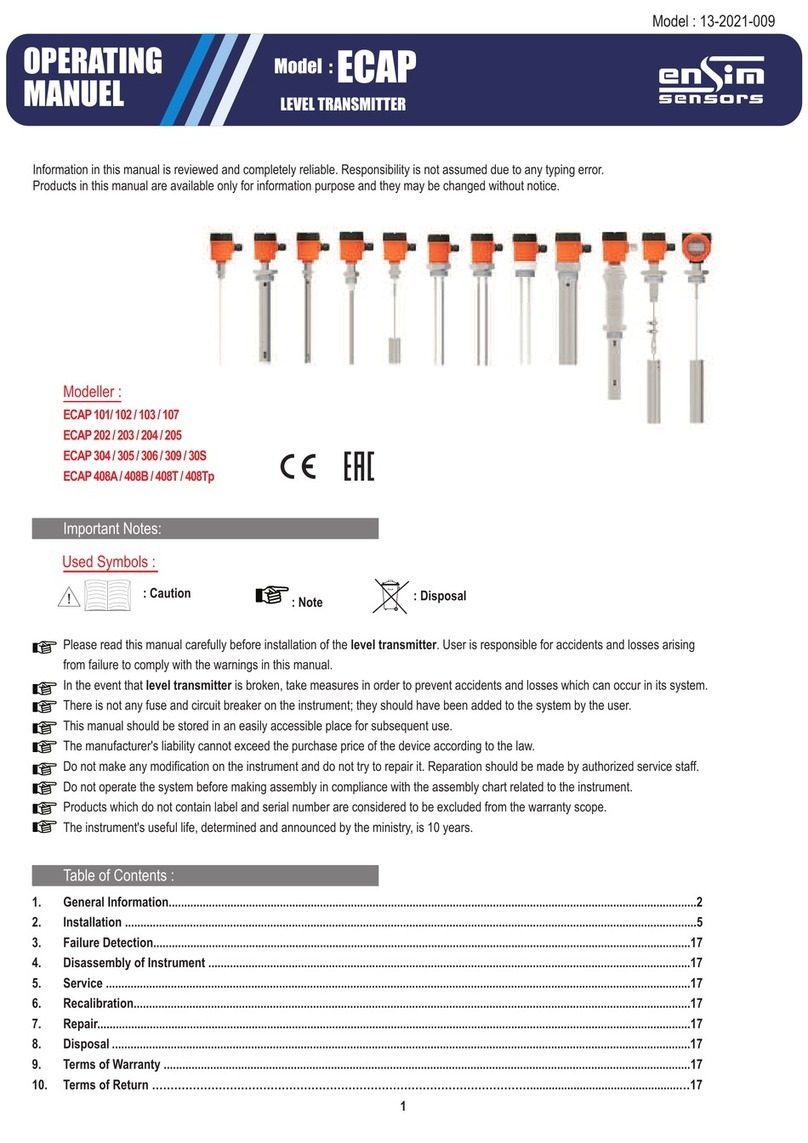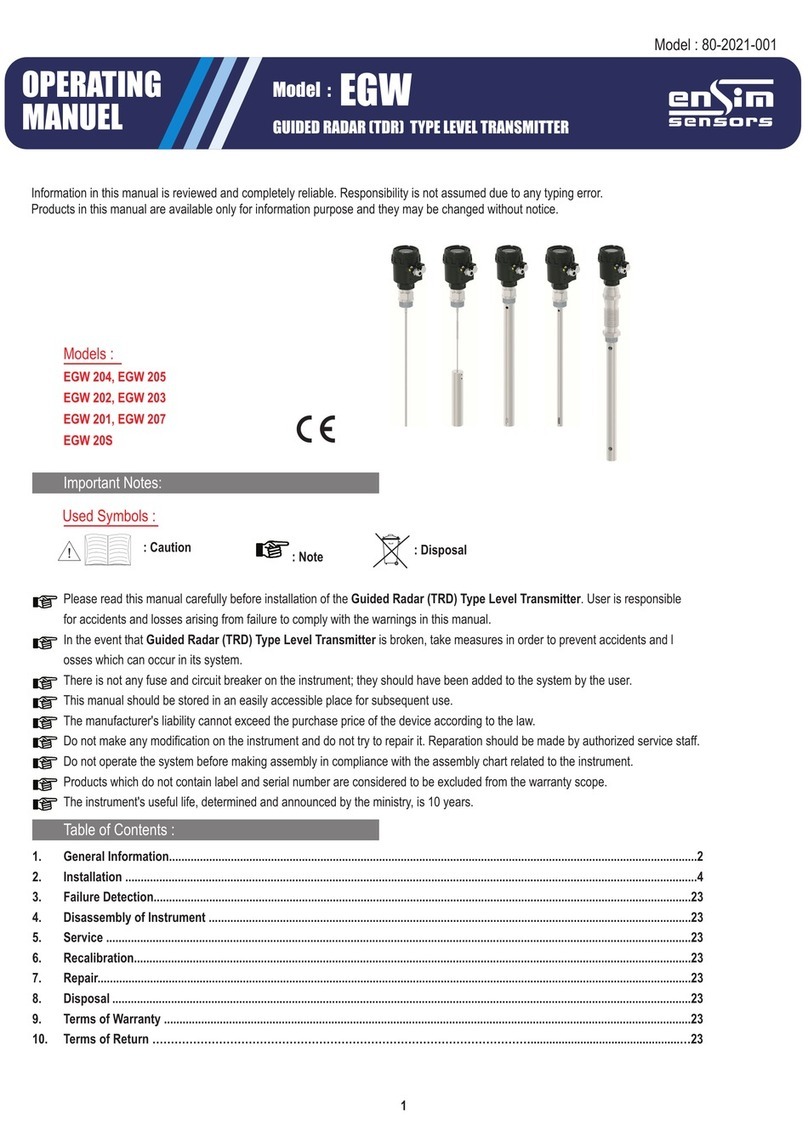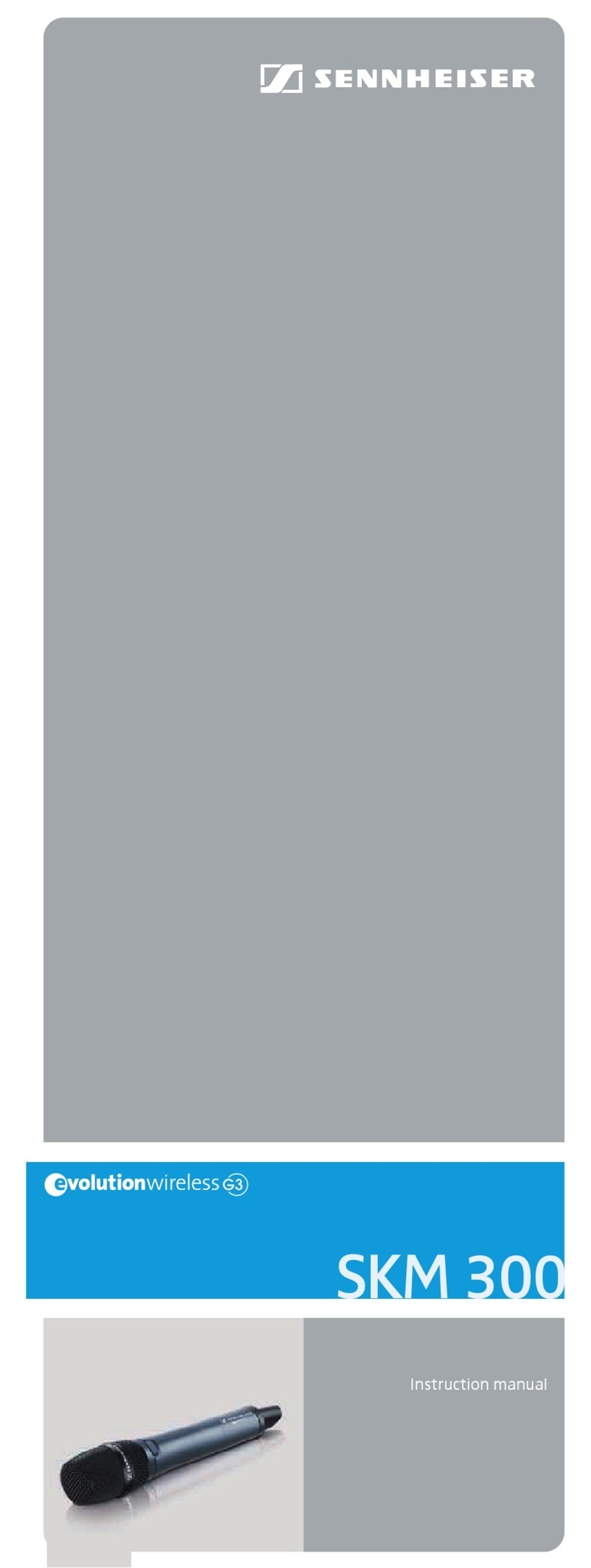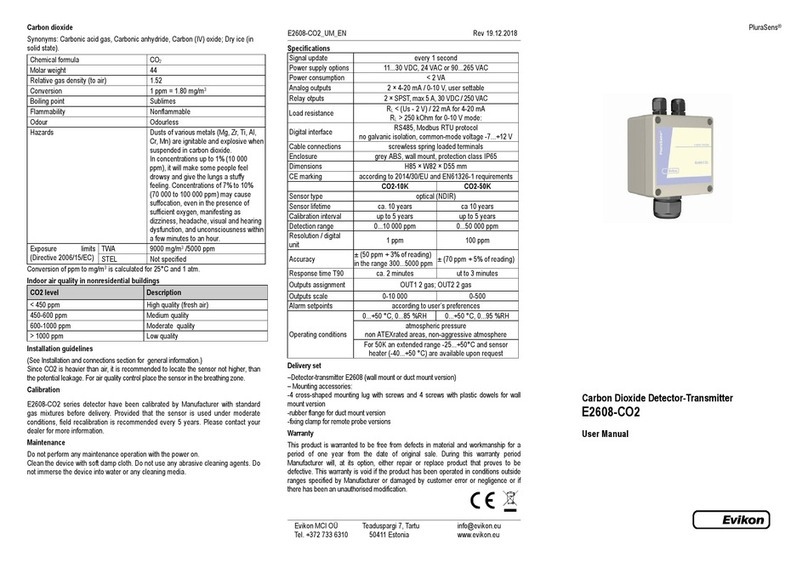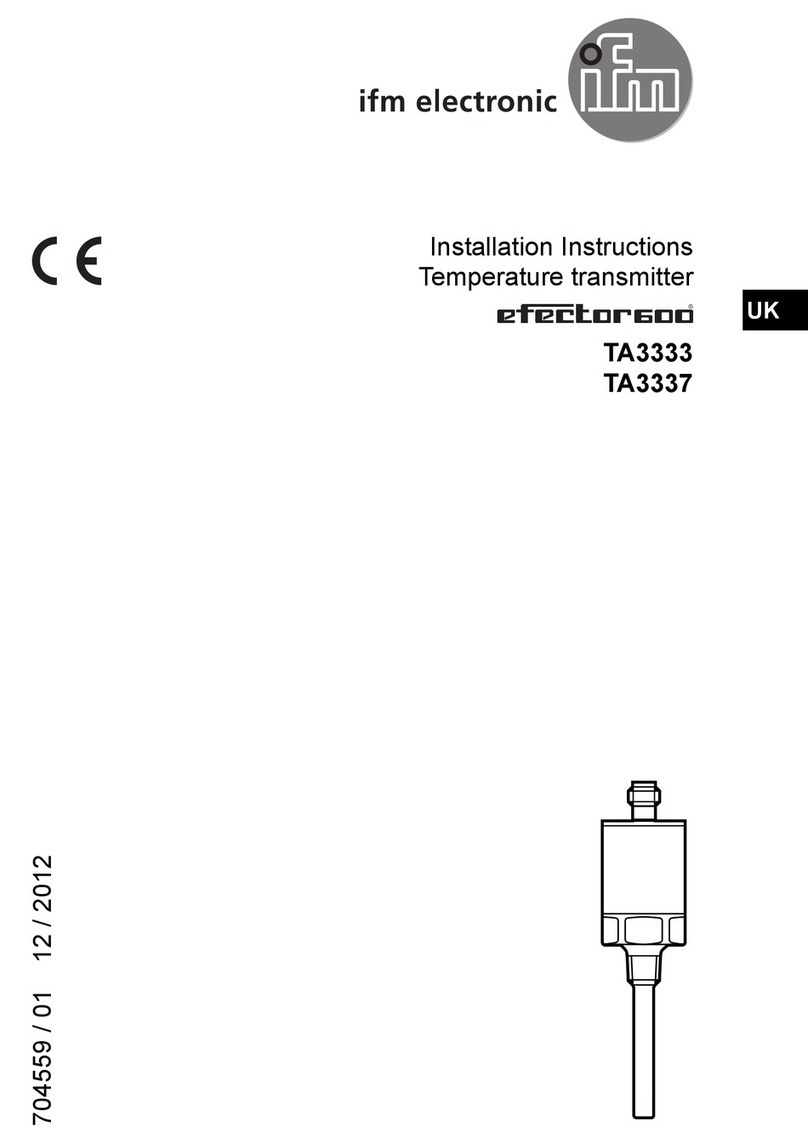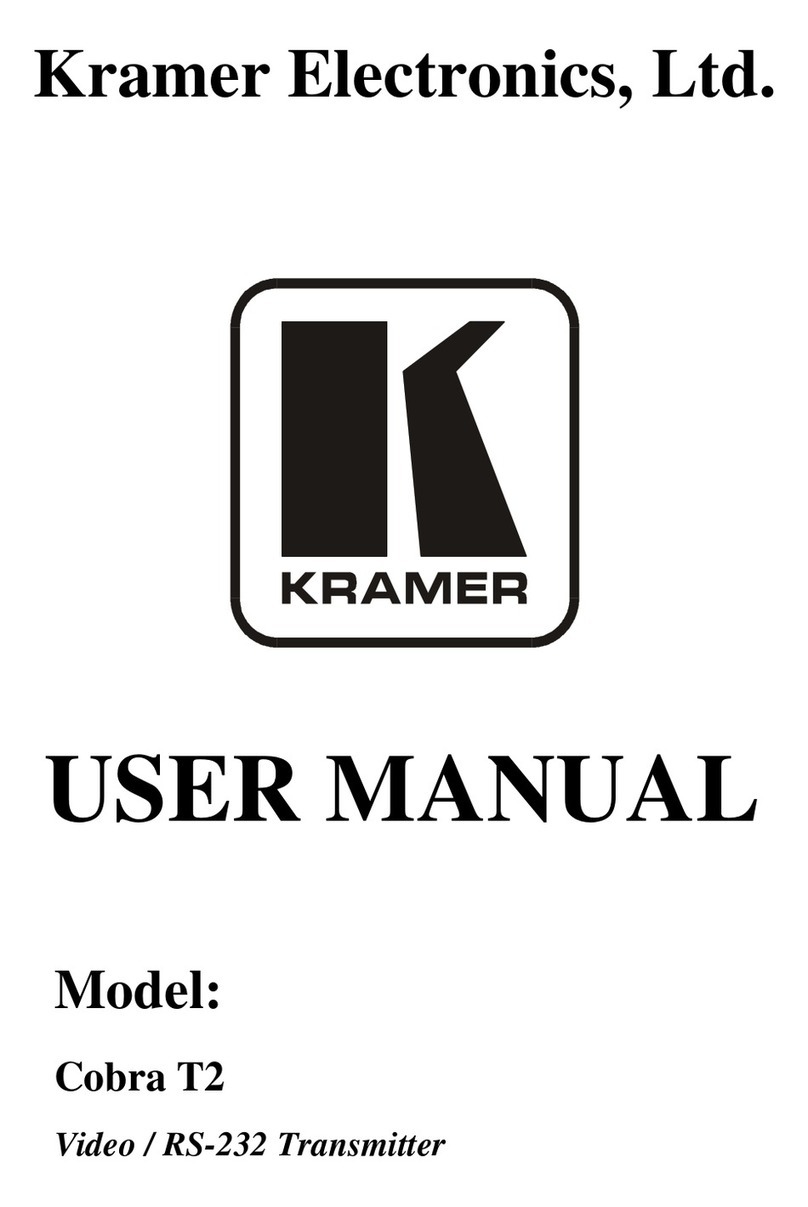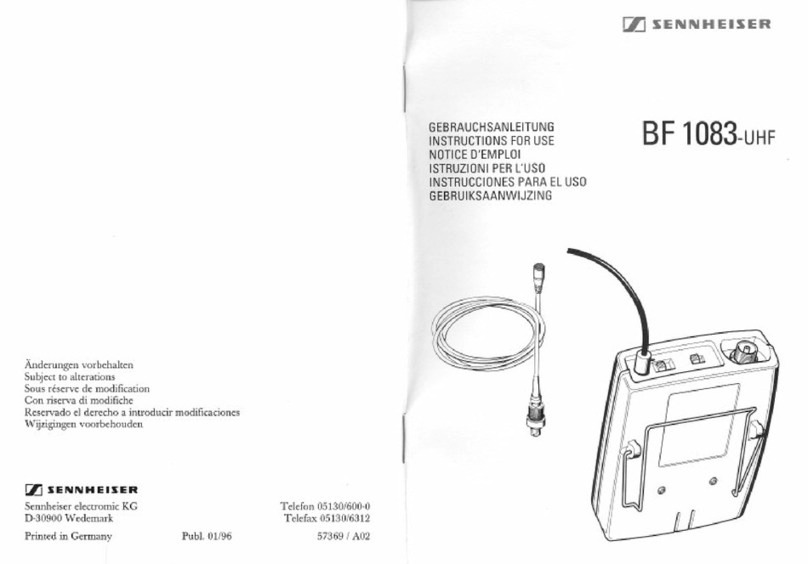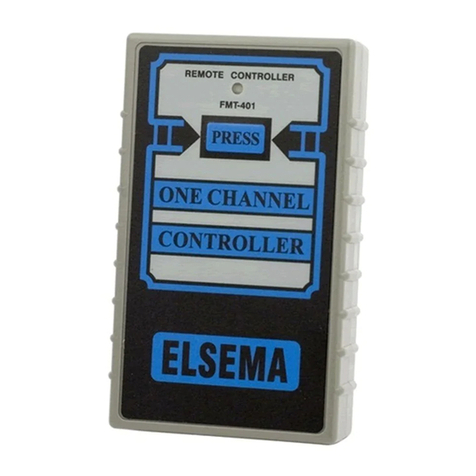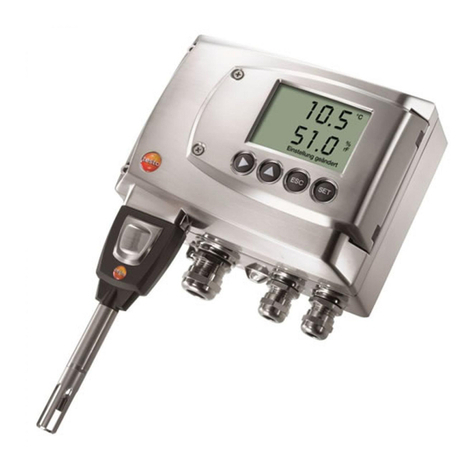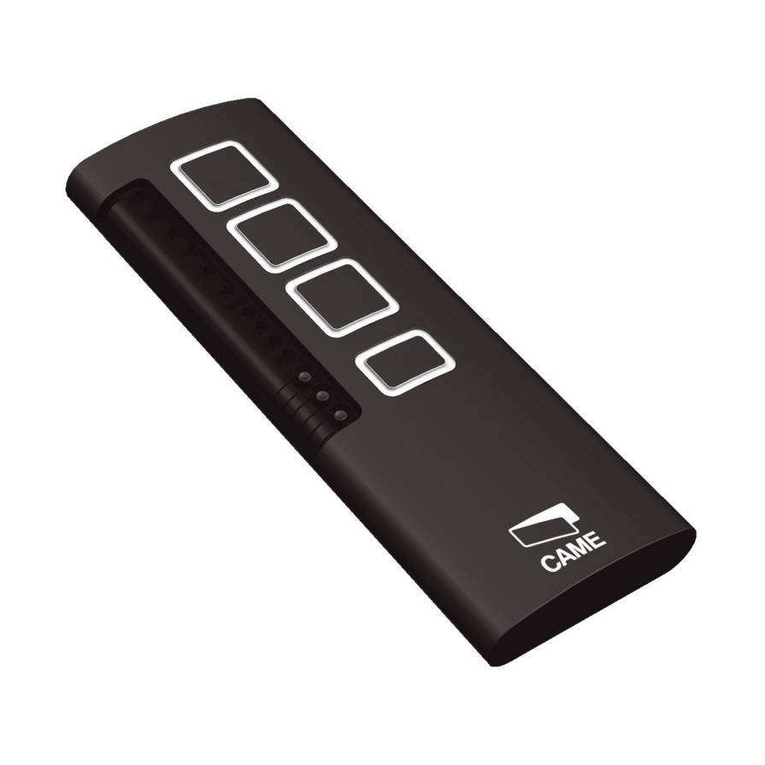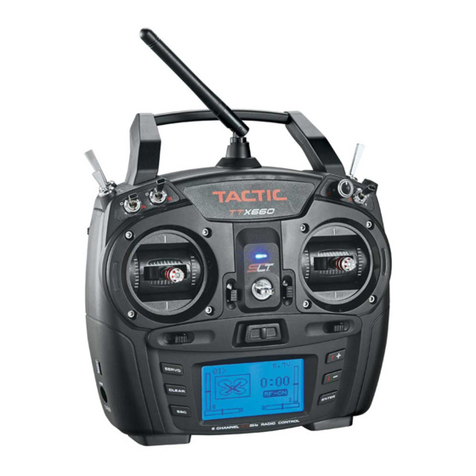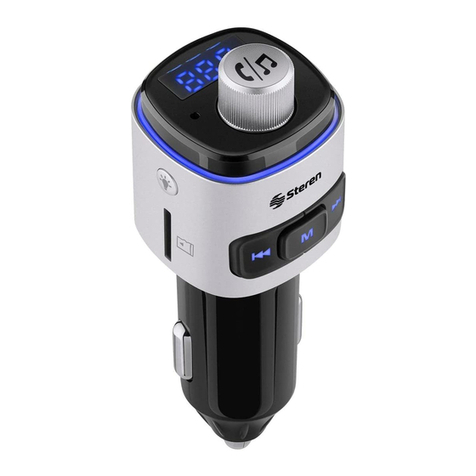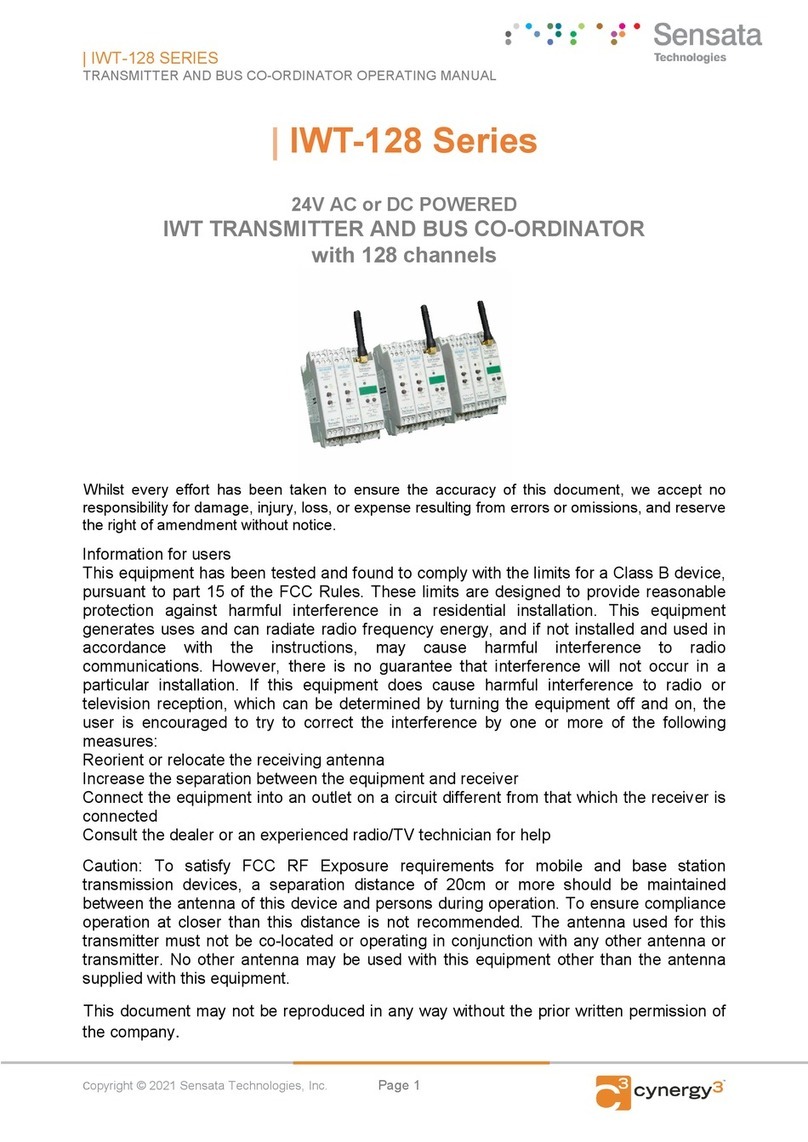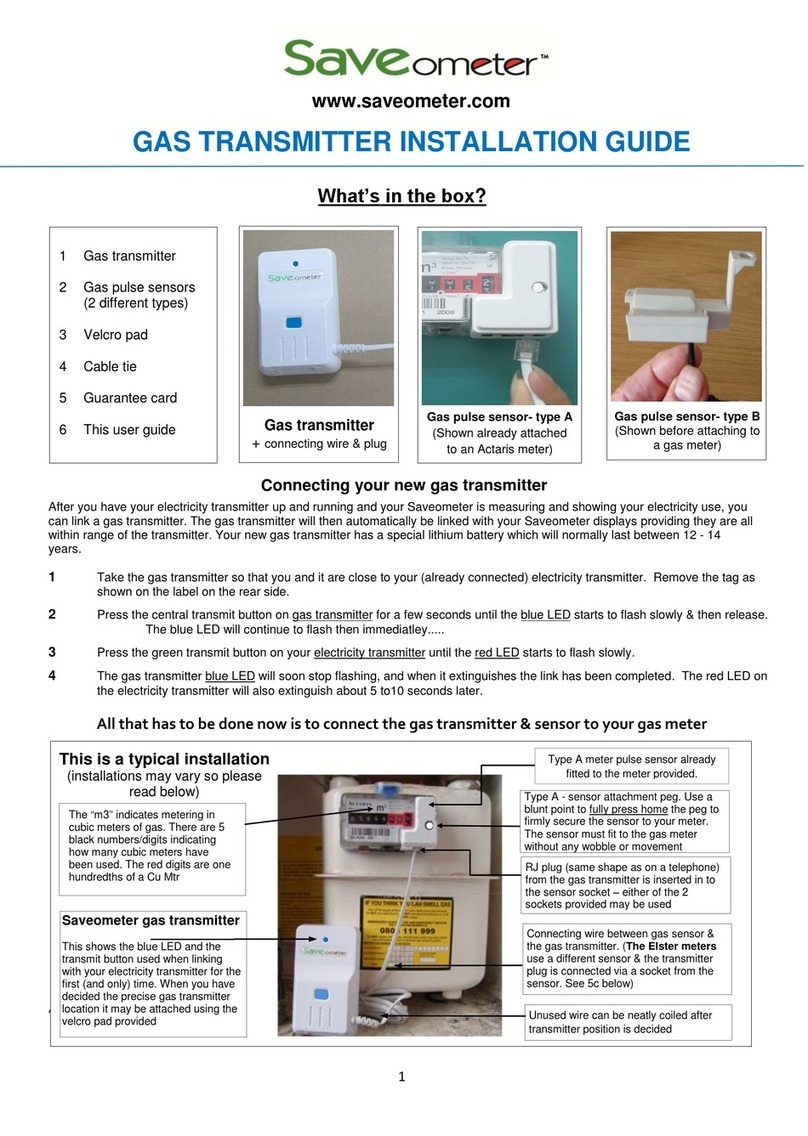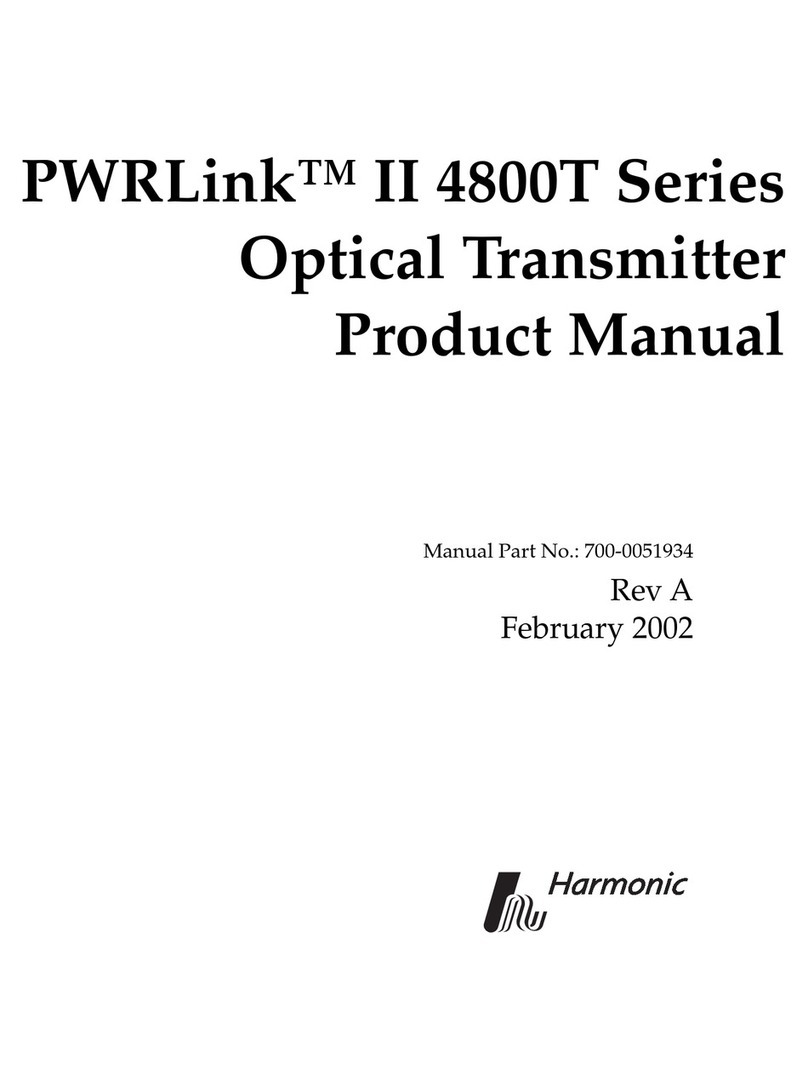ENSIM SENSORS DX-ECAP User manual

OPERATING
MANUEL
CAPASITIVE LEVEL TRANSMITTER
DX-ECAP
Model :
Model : 06-2022-008
Information in this manual is reviewed and completely reliable. Responsibility is not assumed due to any typing error.
Products in this manual are available only for information purpose and they may be changed without notice.
1
Important Notes:
Used Symbols :
: Caution : Note : Disposal
Please read this manual carefully before installation of the capasitive level transmitter. User is responsible for accidents and
losses arising from failure to comply with the warnings in this manual.
In the event that capasitive level transmitter is broken, take measures in order to prevent accidents and losses which can occur in its system.
There is not any fuse and circuit breaker on the instrument; they should have been added to the system by the user.
This manual should be stored in an easily accessible place for subsequent use.
The manufacturer's liability cannot exceed the purchase price of the device according to the law.
Do not make any modification on the instrument and do not try to repair it. Reparation should be made by authorized service staff.
Do not operate the system before making assembly in compliance with the assembly chart related to the instrument.
Products which do not contain label and serial number are considered to be excluded from the warranty scope.
The instrument's useful life, determined and announced by the ministry, is 10 years.
Table of Contents :
General Information...........................................................................................................................................................................2
Installation .........................................................................................................................................................................................8
Failure Detection..............................................................................................................................................................................19
Disassembly of Instrument ............................................................................................................................................................19
Service .............................................................................................................................................................................................19
Recalibration....................................................................................................................................................................................19
Repair................................................................................................................................................................................................19
Disposal ...........................................................................................................................................................................................15
Terms of Warranty ..........................................................................................................................................................................15
Terms of Return ................................................15
1.
2.
3.
4.
5.
6.
7.
8.
9.
10.
DX-ECAP 101/ 102 / 103 / 107
DX-ECAP 202 / 203 / 204 / 205 / 20S
DX-ECAP 304 / 305
DX-ECAP 408A / 408B
Models :
1783

2
1. General Information :
1.1. Material Acceptance
DX-ECAP Capacitive level switch is a capacitive level sensor for level measurement of conductive liquid, nonconductive liquid, granulated materials with
solid particles, adhesive and acid/basic liquids. When a material comes between electrode rod and tank wall, a capacitance change occurs and
when this change exceed adjustment threshold, contact output is delivered. Designed for difficult process conditions. Refrigerated models
can be manufactured for high temperature and pressure conditions. Calibrations of triggering point and relay operation range can be performed
by the user under workplace conditions. It can be connected horizontally or vertically.
1.2. Information about Areas of Use
Liquid tanks, food machines, cooling liquid tanks, shipping, glycol tanks, brine,
waste water tanks.
Oil tanks, CO2 liquid tanks, high temperature tanks, non-conductive liquids.
Grain stores, cement, sand feed, flour, milk powder, organic and plastic granule.
Sticky hot and high viscosity liquid, acid and chemical liquids.
Ambient Conditions: Relative Humidity: 5-98 %RH Ambient temperature: 60C (It is not used under -20 C)
There are no moving parts.
High pressure and temperature resistant design.
Modular structure with easy assembly.
Not affected by foam, liquid splashes.
Not affected by vibration, has robust
mechanical structure.
Zero span adjustment is easy.
Measurement along whole sensor.
Operability with reverse assembly.
Advantages :1.3. Working Principle
Capacitance definition, assuming two parallel conductive plates are used;
d
C
R
Metal Tank
S
Isolation
Capacity
Distance
Impedance
Distance
However, there are scarcely any sensor type which this definition can be pratically utilized.
Above Formula can no longer bi reliable especially when residual areas increase due to large distance (d) (which is usually the case).
Thus, measuring impedance for distance measurements give more accurate results than capacitance measurement.
e
Impedance definition Z = R + jL + ( jC )-1
e
R is defined as real component and represent ambient conductivity.
C(Farad)
S,d (mt)
eo.er.S
dcan be described by this formula
C=

3
2.p.eo.er
In (b/a)
Impedance is calculated by this definition
C=
jLw second component is defined as inductive reactance. This component is present even if we perform capacitive
measurement. However we neglect this. Since we evaluate results based on electrostatic properties of the environment,
no error will occur. Resulting impedance definition is Z= R + (jC )-1.
e
Measurement is made by charge transfer in our capacitive sensors. Total impedance is defined as Z = V / I.
I (current) I = Q/t
Q (Coulomb)
T (sec)
Capacitive reactance we desire to measure is (jC )-1. Meaning that charge and impedance have the same phase.
To summarize, charge transferred to medium is directly proportional with capacitive reactance.
For sensors manufactured as coaxial;
a: Central electrode radius
b: Outer screen radius
L: length
e
e
Excitation applied between 10KHz250KHz based on length for all our models. ( =2xpxf)
Linearity error that may be caused by conductivity component (R) effect is prevented by electronic
circuit design and mechanical design. Reduced to a level lower than 1ppm, acceptable as zero.
Environment Pressure / Temperature Chart
-20 40 80 2000
16
25
Pprocess (bar)
Tprocess (°C)
Process Pressure / Temperature Chart
-40 150
With CoolingApparatus
40
80
0-40 100 200150 Tprocess (°C)
TAmbient (°C)
With CoolingApparatus

4
1.4. Technical Specifications and Material Knowledge
1.5.Application Examples
ll 1/2 G Ex d llC Tx*1 Ga/Gb For Gas
ll 1/2 D Ex (ta/tb)*3 lllC Tx*2 For Dust
Have a look at the temperature class chart.
Certification
*
AC/DC Relay
PLC
Light
Hooter
Max. 200°C
(With
cooling apparatus)
Solids
Particulate
Material
Adhesive
and
Acid / Basic Liquid
Conductive
Liquid
Low
Conductive
Liquid
9-36 VDC
4-20mA two wire Std.
0-20mA - 4-20mA, 0-10 V Three wire Opt.
(-)1...25 bar (Depending on the model)
(-)20 / (+) 60ºC
PFA Std. Opt. PEEK, PTFE , Rubber, FKM
IP 66
Conductive liquids
Low conductive liquids
Solids particulate materials
Adhesive and acid/basic liquids
% 0,5
%0,5
Terminal
1pF...3nF
% 0,8 % 1
, ,
er
1,6
With LED-Power and Contact LED
Max. 50mW
EMC, Low Voltage
Max. 40 NM
295 g. for DX-ECAP 101 250mm
Max. 500 V
Aluminum Injection Molding - AlSi12Fe (Std)
Black (RAL.9005)
Accuracy
Connection Metarial Opt.316 St.St.
Linearity
Measurable Metarial
Capacity Range
Min. Di-Electric Constant
Max.Tensile Force
304 St.St.
Supply
Signal Output
Isolation Material
Housing Material
Working Pressure
Working Temperature
Display
Ambient Temperature
Power Consumption
Protection Class(EN60529)
Test
Weight
Electrical Connection
Isolation
(-) 40 / (+) 150ºC (Depending on the model)
200ºC with cooling apparatus
(-) 196° For Cryogenic Tank
(-) 50...+80ºC For NBR
FKM (-)30...+200ºC

5
1.8. Target Group
This operating manual has been prepared for qualified technical personnel.
1.9. Security Notes
Please consider below notes for avoiding hazardous cases around operator and its environment.
Only users that authorized in work safety and whom also have read the manual should setup this equipment.
Work safety , accident avoid regulations and national/local setup standards must be meet.
Equipment should only be used in stated specifications.
Equipment must only be mounted while there is no pressure.
1.6. Label Information
1.7. Package and package contents
Please check whether you have taken delivery
of below listed content completely or not and check
its conformity with criterions in your order:
*Capasitive Level Transmitter
*This operating manual
IE 18 04 0002 - 0001
:
:
:
:
:
Type : DX-ECAP 203-9-250-1-009-19-01-66-02-00/0
Power Supply
Output
Process Temp.
T (Ambient)
Serial Number
Level Transmitter
24VDC +/- %10
4-20mA Two Wire
-40 / +150°C
-20...+60°C
IE18040002-0001
www.ensim.com.tr
MADE IN TURKIYE
1783
LONCA A.Þ. Ferhatpaþa Mah.Gazipaþa Cad. No:104A
34888 Ataþehir - ÝSTANBUL / TÜRKÝYE
Type B20x
www.ensim.com.tr
16A 240 VAC 50 / 60 Hz IE18030095-0014
S.No:
Model
Serial Number
Working Conditions
If the ATEX certificate metal label is damaged,
you can contact the manufacturer with the serial number.
Manufacturer Name ManufacturerAddress
Note :
DO NOT OPEN WHEN ENERGIZED
KEEP TIGHT WHEN CIRCUIT ALIVE
M3
Supply
Output
Working Temperature
TSE 18ATEX0099
ll 1/2 G Ex d llC Tx*1 Ga/Gb
ll 1/2 D Ex (ta/tb)*3 lllC Tx*2
Notified
Date Sign
Explosive ProtectionAreaProduct Name
Producer Website
Warning Symbols
Manufacturer
Brand
Product
Label
Metal
Label
Ground
Label
Model
Explosive
ProtectionArea
Serial
Number
Features
ATEX Classes
Product
Number
System
Number
Month
Year
Work
Order
Type
Level Transmitter
S.N.
Quantity
DX-ECAP 203-9-250-1-009-19-01-66-02-00/0
IE18040002-0001
:
:
1 pc.:
Kullaným Kýlavuzu Montajdan Önce Okunmalýdýr.
Supply 24VDC %10:
IE18040002-0001
Box
Label
Serial Number
Model
Piece Barcode
Supply Voltage
Explosive ProtectionAreaProduct Name
Std. Package

6
1.10. Certifications and Approvals
:It shows that, product meets required conditions of EU with CE stamp
and stipulate that product passed quality assessment stages
TS EN 60079 - 0 : 2013
TS EN 60079 - 1 : 2014
TS EN 60079 - 31 : 2014
ATEX (2014 / 34 / AB) :
LVD (2014 / 35 / AB) :TS EN 61010 - 1 : 2012
TS 3033 EN 60529 : 1997
TS EN 61326 - 1 : 2013EMC (2014 / 108 / AT) :
1.10. Safety Ýnstructions (ATEX)
Safety instructions should be read and applied to the end.
-The following notes must be taken into attention to protect the operator and the enviroment from possible hazards.
-The device setup and maintenance of this device must be done by knowledgeable persons who has read the instructions and is familiar with
the safety at work.
-Ýt should be checked by the users that the products are fitted suitable to the zone maps.
-Work safety,must be observe by accident prevention regulations and national installation standards.
-The product should be used within the specification presented guideline.
-You can only mount the device when there is no presure.
-These safety instructions are protected in terms of 1 / 2 D and 1 / 1 G category for DX-ECAP coded series and is compatible with
TSE 18ATEX0099 and CE certificate.
-The Label should be used in appropriate environments.
-Because the enviroment is max. 60 C you should choose a suitable cable for use.
-Do not over tighten the cable gland in order not to affect the IP protection class.
-Make sure the cable entry and plug is tightened right.
-Ground connection must be done properly and checked without energizing.
-Before starting use make sure the lid is fully closed and the set screw is tightened.
-DX-ECAP models are metal protected.Ýt is Compatible with different supply voltages specified in the catalog.
- The metal enclosure must be in the 2D or 2G zone. The pipe and float section must be located in the 1D and 1G zone.
-Max. working temperature,max. Surface temperature can change depending on the model, Please read the document carefully before using.
-During the mounting it should be checked that there is no mechanical stress or deformation in the tank wall.When this happens, the sensor should
not be energized without the necessary correction measures.
-Check that the presure in the tank hasnt exceed the presure shown in the catalog.
-The mounting sensor must be mount properly in the tank filling system.In case it is not suitable, the sensor must be protected and the in-tank
apparatus must be protected.
- Flange surface smoothness must be maintained in flanged connection.
- Flange seating surface should not be scratched, and suitable liquid gasket should be used instead of sealing with gasket in counter flange mounting.
- Flanged connections are welded with the sensor part.
-The sensor is designed to withstand the chemical effects of the materials.Check the suitability of different materials.
-The Sensors are in suitable storage conditions and protected from dust and damp.
-Device repairs should only be done at the manufacturer Lonca Inc.
-Protect the device from friction and cleaning should be done without water.
-In case of improper circuit conditions, the main energy must be completely disconnected and safety measures should be taken without replacing
the temperature circuit breaker with its backup.Changes should be made in a safe area.

7
1.12. ATEX Marking Sample Description
II 1/2 D Ex ta/tb IIIC T4 IP66
II 1/2 G Ex d IIC T4 IP66
Dust
Explosive Protection
Area
Equipment Group
Equipment Category
Explosive Atmosphere
Explosive Protection
Protection Type
Dust Type
Temperature Class
(Max. Surface Temperature)
Housing Protection Class
Gas
Explosive Atmosphere
Protection Type
Temperature Class
(Max. Surface Temperature)
Housign Protection Class
Equipment Group
Equipment Category
Explosive Protection
Gass Type
Explosive Protection
Area

8
2.5. Mechanical Parts
Insulated Probe
Cover
Elektronic Unit
Housing
Coaxial Probe
Cable Gland
Connection
Record
Chain
2. Installation :
2.1. General Notes :
The device installation is in 2014 / 34 / EU criteria to ensure the safety of atmosphere and people from explosions, must only be done by staff who
knows the safeguards.
Do not apply force to the instrument during the installation!
Do not use the Capacitive Level Transmitter with a greater pressure than recommended pressure.
Do not forget that instrument is precise, carry it carefully and prevent not to be damaged.
It should be guaranteed that there are not any magnetic particles.
The Max. working pesure should not be exceeded.
2.2. General Installation Stages
*Remove Capacitive Level Transmitter from the box carefully
*Check whether gasket is appropriate for fluid or not. If is not appropriate, contact with the producer.
*Then, apply below mentioned explanations according to structure of the design.
2.3. Special Notes
*Please ensure that there is no mechanical stress on the shaft following installation. Such case will cause slipping in thecharacteristic curve.
*Capacitive Level Transmitter must be placed upright or horizontal.
*Allocate valve certainly in the process connection while instrument is used.
*Allocate blowdown valve under bottom flange for blowdown.
*If instrument is mounted outside and if there is any danger of lightning or
excessive pressure, take preventive measures by taking necessary measures.
*In the operating conditions, Capacitive Level Transmitter may be hot according
to situation of fluid, in this case, do not touch the indicator, otherwise your skin is damaged.
*The grounding product must be done properly. (can be done outside or in housing)
2.4. Installation For Mechanical Connections
*Use appropriate O-Ring or gasket for tightness.
*Ensure that its surface is clean and smooth.
*Assemble the instrument manually.
*Connect the contacts as shown in the figure.
(For G1" max. 20 Nm, G 1 1/4, for G 1 1/2 max. 30Nm)

9
2.6. Electrical Installation
Make the electrical connection of the instrument according to details on its label, table and cable figures in this manual
OutputSupply
0-10V Three Wire
4-20mA Three Wire
Supply Output
Supply Output
0-20mA Three Wire
4-20mA Two Wire
Output
mA
Load
Note : It has been produced according to IPC A 600 class 2 conditions and tested with 100 % E-test. Moreover,
HASL (non-lead) surface test has been applied.
% 100 % 100
L
% 0 % 0
Measure Range
Can be Setting
Zero Point
Can be Setting
*Can be mounted upside down
Measuring Range is adjustable
Zero Point
is adjustable
* Measuring range and zero point
can be set 1/10 during probe.

10
Measurement field (span) adjustment: 20mA is adjusted
at factory exit, assuming tank is filled up to length of electrode.
If adjustment is needed again, 20mA output adjustment can be
performed by S calibration after filling the tank up to a desired
level.
Z (Starting Range-Zero) : Measurement starting point - 4mA S (Measuring Range-Span): Measuring peak point - 20mA
Identification of Calibration Buttons :
Only the switch 1 is active at first. When SW1 brought into ON position, red led light starts winking with 1 second interval.
Zero level adjust SW1 is on position): Z button must be kept presoed until the green led is flashed.
Span level adjust (SW1 is on position): S button must be kept presoed until the green led is flashed.
After calibration, when SW1 brought into off position, it saves settings to memory and turn back into normal working condition.
1
2 3 4
NONO
S Span Level
Z Zero Level
Switch Settings of Output Signal :
When setting output signal, only the 3rd and 4th switches are active and configuration is defined only if the circuit energized.
Power Supply : 9-36VDC Max. Load Resistance : (RL) = (Vsup 3) / 0.02 [ ]
1
2 3 4
NONO
1
2 3 4
NONO
1
2 3 4
NONO
1
2 3 4
NONO
1
2 3 4
NONO
or
4-20mA Two Wire 4-20mA Three Wire 0-10V Three Wire0-20mA Three Wire
Zero adjustment (zero): 4mA adjustment is performed at factory exit,
assuming tank is completely empty. If adjustment is needed again,
4mA output adjustment can be performed by Z calibration after the
tank is filled until initial level.
Changes are not effective during normal operation.
Calibration :
1
2 3 4
NONO
Shifting Span Point :
1
2 3 4
NONO
1
2 3 4
NONO
1
2 3 4
NONO
1
2 3 4
NONO
1
2 3 4
NONO
Make SW3 ON while SW2 ON.
If SW3 brought into ON position, while SW2 is in
ON position.
The span point that's set before, shifts upper.
When it came to the desired value,
the switch should be taken to the off position.
Make SW4 ON while SW2 ON.
If SW4 brought into ON position, while SW2
is in ON position.
The span point that's set before, shifts down,
towards. When it came to the desired value,
the switch should be taken to the off position.
Shifting Zero Point :
Make SW3 ON while SW2+SW1 ON.
If SW3 brought into ON position, while SW2+SW1
are in ON position.
The span point that's set before, shifts upper.
When it came to the desired value,
the switch should be taken to the off position.
Make SW4 ON while SW2+SW1 ON.
If SW4 brought into ON position, while SW2+SW1
are in ON position.
The zero point that's set before, shifts down.
When it came to the desired value,
the switch should be taken to the off position.
Make SW2 ON before SW1 ON.
It becomes active when SW2 brought into
ON position and then SW1 brought into
ON position.
Make SW2 ON
It becomes active when SW2 brought into
ON position.

11
Material : 304 Stainless Steel
Welded manufacturing
Opens - Closes Hinged
To Protect Against external conditions.
Protection Case :
Housing :
MATERIAL PROTECTION
CLASS
TEMPERATURE
(oC)
TYPE
B20x
Aluminium
IP 66 -40...+200
SIZE
a x b (mm)
132 x 104
ORDER
CODE
704
Cooling :
27 Hex
PFA
L
68
For 200°C
1/2BSP
B21x
Alüminium
b
a
Ta
Factory Area
(Safe)
ZONE 21 / 1
or
ZONE 22 / 2
Tp
Process Side
(Explosive Enviroment)
ZONE 20 / 0
or
ZONE 21 / 1
or
ZONE 22 / 2
2.7. Mechanic Connections :
Order
Code
Dimension
B
Hex
[mm]
Stem Lenght
b [mm]
3/8BSP
1/2BSP
3/4BSP
1BSP
1 1/4BSP
1 1/2BSP
2BSP
50
50
50
50
50
60
70
20
14
14
23
23
23
23
(ISO228-1)
0003
0004
0005
0006
0008
0009
0012
PN 16 D (mm)
DN25
DN32
DN50
DN80
DN100
165
140
165
200
220
85
100
125
160
180
D1 (mm) b (mm)
16
16
18
20
20
(ISO1092-1)Order
Code
0502
0503
0505
0507
0508
PN 40 D (mm)
DN25
DN32
DN50
DN80
DN100
115
140
165
200
235
85
100
125
160
190
(ISO1092-1)
D1 (mm) b (mm)
18
20
20
20
24
Order
Code
0702
0703
0705
0707
0708
150 LBS D (mm)
DN50
DN65
DN80
DN100
152,4
177,8
190,5
228,6
121
139,7
152,4
157,2
(ANSI B16.5)
D1 (mm) b (mm)
19
22,2
23,8
23,8
Order
Code
1005
1006
1007
1008
Dimension Dia. b
(mm)
DN32
DN50
DN65
50,5
64
91
15
17
17
(ISO2852)
D (mm)
1501
1502
1503
Order
Code
D (mm)
DN40
DN50
DN100
56
68
121
48
61
114
d1 (mm) A (mm)
13
14
20
Dimension
DN40
DN50
DN100
Dimension
1600
1601
1602
Order
Code
b
D1
D
AA
B
b
b
D
D
d
d1
A
Thread (Connection has been welded with sensor)
Flanged (Connection has been welded with sensor)
Clamp (Connection has been welded with sensor)
Dairy
(Connection has been welded with sensor)

12
2.8.
Sample Models:
CONDUCTIVE LIQUIDS
Fully Insulated Rope
Conductive Tank
DX-ECAP 107
(-)1...+25 bar
(-)40...+150°C
Max. 1 m.
Fully Insulated Coaxial Probe
Insulated Tank
DX-ECAP 103
(-)1...+25 bar
(-)40...+150°C
Fully Insulated Rope
Conductive Tank
(-)1...+25 bar
(-)40...+150°C
L=1m.(Std) Max. 16 m.
DX-ECAP 107
PFA
3/4BSP
50 Hex
L
St. St.
80
St. St.
Ø35
St. St.
1 1/2BSP
60 Hex
PFA
L
80
200
St. St.
St. St.
2BSP
70 Hex
Ø40
PFA
L
80
Aluminium Aluminium Aluminium
(-)1...+25 bar
(-)40...+150°C
DX-ECAP 101
Max. 4 m.
DX-ECAP 102
Max. 4 m.
(-)1...+25 bar
(-)40...+150°C
50 Hex
PFA
L
1/2BSP
Aluminium
70 Hex
L
2BSP
PFA
St. St.
Aluminium
Max. 32 m.
Fully Insulated Probe
Conductive Tank
Fully Insulated Coaxial Probe
Insulated Tank

13
LOW CONDUCTIVE LIQUIDS
Max. 16 m.
(-)1...+25 bar
(-)40...+150°C
DX-ECAP 204 DX-ECAP 204
Max. 32 m.
(-)1...+25 bar
(-)40...+150°C
DX-ECAP 205
Max. 6 m.
(-)1...+25 bar
(-)40...+150°C
St. St.
1 1/2BSP
Ø35
St. St.
St. St.
60 Hex 50 Hex 1BSP
Ø12
Aluminium
St. St.
Ø40
Aluminium Aluminium
2BSP
70 Hex
80
L
L
PTFE
St. St.
200
St. St.
St. St.
L
DX-ECAP 202
Max. 4 m.
(-)1...+25 bar
(-)40...+150°C
DX-ECAP 203
Max. 1 m.
(-)1...+25 bar
(-)40...+150°C
50 Hex
L
3/4BSP
St. St.
70 Hex
L
2BSP
St. St.
Aluminium Aluminium
DX-ECAP 20S
Partly Insulated Coaxial Probe
Conductive / Insulating Tank
Max. 4 m.
(-)1...+25 bar
(-)40...+400°C
60 Hex
L
1 1/2BSP
St. St.
Aluminium
320
Ø38
Partly Insulated Coaxial Probe
Conductive / Insulating Tank
Partly Insulated Probe
Conductive Tank
Partly Insulated Rope
Conductive Tank
Partly Insulated Rope
Conductive Tank
Partly Insulated Coaxial Probe
Conductive / Insulating Tank
Sample Models:

14
SOLID PARTICULATE MATERIALS
Max. 16 m.
(-)1...+25bar
(-)40...+150°C
ADHESIVE AND ACID / BASIC LIQUIDS
DX-ECAP 305
Partly Insulated Probe
Conductive Tank
Max. 6 m.
(-)1...+25 bar
(-)40...+150°C
8050
L
50 Hex 1BSP
St. St.
PTFE
Aluminium
Ø12
DX-ECAP 304
St. St.
1 1/2BSP
80
Ø35
St. St.
St. St.
L
60 Hex
Aluminium
8050
Partly Insulated Rope
Conductive Tank
DX-ECAP 408A
Double Probe (Single Fully Insulated)
Conductive / Insulating Tank
Max. 6 m.
(-)1...+25 bar
(-)40...+150°C
L
50 Hex 1BSP
St. St.
PTFE
St. St.
Aluminium
DX-ECAP 408A
Double Probe (Single Fully Insulated)
Conductive / Insulating Tank
Max. 4 m.
(-)1...+25 bar
(-)40...+150°C
L
50 Hex 1BSP
PFA
St. St.
Aluminium
St. St.
Sample Models:

15
2.9. Maximum Surface Temperature
Temperature Class Table
DX-ECAP
30min.
(-)40...(+)150°C
30°C
40°C
50°C
60°C
150°C
150°C
150°C
150°C
60°C
67°C
75°C
88°C
(-) 20°C < T Ambient < (+) 30° C...(+) 60°C Working Temperature :(-) 40...(+) 150°C
DX-ECAP
30°C
40°C
50°C
60°C
200°C
200°C
200°C
200°C
43°C
46°C
58°C
70°C
(-) 20°C < T Ambient < (+) 30°C...(+) 60°C Working Temperature :(-) 20...(+) 200°C
DX-ECAP (Metal )
40min.
(-)40...(+)200°C (With cooling)
T6
T6
T6
T5
T6
T6
T6
T6
STD.
MODEL
Thermal Protection Insurance is 105 °C
Without opening the cover
standby time
Working Temperature
T Ambient
MAX. AMBIENT TEMPERATURE
ZONE 21 / 1
T Process
MAX. PROCESS TEMPERATURE
ZONE 20 / 0
T Surface
MAX. SURFACE TEMPERATURE TEMPERATURE CLASS
T Ambient
MAX. AMBIENT TEMPERATURE
ZONE 21 / 1
T Process
MAX. PROCESS TEMPERATURE
ZONE 20 / 0
T Surface
MAX. SURFACE TEMPERATURE TEMPERATURE CLASS
Important Note : Wall thickness of the product is manufactured as 3 mm from stainless stell for he temperature class tests.
Where the isolation is thinner , autorized technical personnel must take precautions.

16
2.10. Part Names
Cover Seal
Cover
Electronic Cart
Body Set screw
Grounding Screw
Grounding Internal Bracket
Stopper
Cable Record
Metal Label
Body Seal
Grounding Screw
Grounding Outer Bracket
Connection Thread
Probe Isolation
Body
Product Label
Grounding Label
Cover Set screw
Probe Tightening Nut
Probe Tightening Spring
Chain
Probe
O-Ring
Coaxial Pipe
Coaxial Pipe Stopper

17
3 -180 ohm ..............................................23
10-180 ohm .............................................24
240-33 ohm .............................................25
4-20mA Two Wire+Relay.........................26
Special ...................................................... x
4-20mA Two Wire..............................................19
4-20mA Three Wire ..........................................20
0-10V Three Wire .............................................21
0-20mA Three Wire............................................22
8
DX-ECAP 101 -10 - 300 - 0 - 006 - 21 - 25 - 66 - 02 - 00 / 0
For Cond. Liquid,, L=300mm, 1BSP, 0-10V, Aluminium Housing , Ø10 Probe
SAMPLE
7
PROCESS TEMPERATURE
150°C Standard .................................................0
200°C with Cooling Apparatus ..........................1
(-)196°C For Cyrogenic Tank ...................2
230°C with Peek Insulated ...................3
6
STEM LENGHT
5
CERTIFICATE
No........................................................................0
PROBE TYPE (MAX. LENGHT)
Conductive Liquids..............................................1
Low Conductive Liquids .................................2
MODEL DX-ECAP
SolidsParticulate Materials........................3
Adhesive and Acid/Basic Liquids............4
(EN10204-3-1) Material Certification........1
.........................................................................mm
PROBE DIAMETER (Ø)
.........................................................................mm Special ...................................................... x
CONNECTION
(Connection has been welded with sensor)
Thread (ISO 228-1) Clamp (ISO 2852) ISO Flange (1092-1) ASA Flange (B16.5) Special Flange
1/2 BSP..................04
3/4 BSP.................05
1 BSP.................06
1 1/2 BSP .............08
2 BSP.................09
1/2 NPT.........12
3/4 NPT.........13
DN25 - PN16 ... 21
DN50 - PN16 ... 23 DN25 - PN40 ... 26
DN32 - PN40 ... 27
DN50 - PN40 ... 28
DN80 - PN40 ... 29
DN100 - PN16 ... 30
Ø70 Flanged....71
Special...............x
DN50 - 150lb ... 41
DN80 - 150lb ... 43
DN100 - 150lb ... 44
Single Probe - Insulated (Max 4m) ............... 1
Single Probe - Coaxial (max 4 m) Ø38 ........ 2
Single Probe - Thin Coaxial (max 1 m), Ø21 ... 3
Rope -
Partly Insulated
(Max 32 m)...............4
Single Probe -
Partly Insulated
(Max 6 m) .... 5
Rope - Fully Insulated (0 ... 32mt) ................... 7
Double Probe - Single Fully Insulated (Max 4m) ............8A
Double Probe -
Partly Insulated
(Max 6 m) ....................8B
Ceramic Partly Insulated Probe (Max 4 m) ...................... S
Special ................................................................................ x
Order Form: Please consider sample models when coding!.. (Lined spaces defines the standard code)
OUTPUT
HOUSING
9
INSULATION MATERIAL
10
CONNECTION MATERIAL
11
316 Stainless Steel............................................02
Brass...................................................................41 Special........................................................x
OPTIONAL
13
Wall Apparatus......................................../ W
Special..................................................../ x
ELECTRICAL CONNECTION
With Terminal.....................................................00
12
Special........................................................x
Special........................................................x
Aluminium Housing,
B21x , IP66....................704
PBT.....................................................................65
PTFE..................................................................66
PFA.....................................................................67
PEEK..................................................................68
Polyamide................................................69
Rubber......................................................81
FKM..........................................................84
Special........................................................x
No......................................................................./ 0
By - Pass Tube.................................................. / T

1818
2.12. WARNING !!!
Please pay attention to following matters in order to operate your flow switch properly.
When connecting the switch to the tank
Connect with 20 degree angle.
Switch from 30 cm each other
do not connect close
Please keep away from magnetic materials
like iron board ; otherwise the
characteristics might be affected
Please do not dip cables
potting into liquids,otherwise
instulation problem may cause.
Do not fasten switch reversely ,
otherwise its characteristics
might be changed.
Please do not drop ,
otherwise the characteristics
might be changed.
Vibration might be caused instability.
Do not remove the plastic parts
of the bottom of the switch body ,
do not loosen.
Do not pull the cable strongly,
otherwise the characteristics
might be changed.
Do not fasten switch reversely ,
otherwise its characteristics
might be changed.
Do not connect the switch in reverse.
Their characteristics may vary.
Excess current , to be drawn as
a result of direct connection to motor,
may burn relay of switch

19
Your device must be repair only at an outhorized serviced.
3. Failure Delection
If you find an error, try to eliminate it by using this table or send the instrument to our service address for repair.
The instrument should be repaired only by authorized service! Serial number shall be indicated to the authorized service center.
4. Disassembly of Instrument
Instrument should be disassembled while feeding and pressure is not available!
5. Service
6. Re-Calibration
During long period usage of capacitive level switch, there might be deviations on measurements. In those cases, recalibration is recomended. Re-calibration could be
made by your technical staff or you could send to manufacturer company. According to IEC 60017, ex proof devices must be go through detailed inspection every
3 year from purchase date.Respobsibility of inspections are belong to the user ( IEC: International Electrotechnical Commission)
7. Repair Manufacturer Address
If irreparable breakdowns occur, the instrument should be sent to us for repair purpose. Before this, the instrument should be cleaned carefully and packaged
so as not to be broken. Furthermore, you should also add a detailed explanation which describes the breakdown while instrument is sent. If your instrument
contacts with harmful substances, decontamination report should be also sent additionally. In the event that instrument does not have any decontamination
report or our service department has doubts about instrument, repair process will not start until an acceptable report is sent.
8. Disposal
The instrument should be disposed according to 2002/96/EC and 2003/108/EC European Directives (waste electrical and electronic instruments).
Waste electrical and electronic equipment should not be mixed with domestic wastes!
If the instrument has contacted with harmful substances, special attention should be paid for its disposal!
9. Terms of Warranty
The instrument has warranty legally for 24 months after delivery date. Warranty demands are not accepted in case of inappropriate operation, damage on the
instrument or any modification on the instrument.
10. Terms of Return
In the return of materials, user should send an open list related to damage or problem, malfunction of the material to be returned or its operation in the different
modification, with the instrument. If it is required to return the material, used in the dangerous, corrosive or toxic fluid, in this case, used part should be cleaned
very carefully. Security of personnel should be ensured. All products to be returned should be sent to our company address, which
we have stated.
The instrument does not require maintenance. If it is desired, residue accumulated inside should be blown according to kind of fluid and instrument can be cleaned
with soft cleaning solutions. Measures should be taken during the disassembly.
If the instrument contacts with hazardous substances, necessary measures should be taken for decontamination!
Service -Manufacturer Company Name and Address:
LONCA MAK. SAN. TÝC. A.Þ. Ferhatpaþa Mah. Gazipaþa Cad. No: 104A Ataþehir - ÝSTANBUL - TÜRKÝYE
Non-Calibration * The applied process may not be suitable for the probe.
* Grounding connection either poor or disconnected.
* There might be low power supply.
* Grounding might be done correctly.
* PTFE coat around the probe might be damaged.
* Variety of applied process
* PTFE coat around the probe might be damaged.
* Grounding might be done correctly.
Increase of the output current
* Appropriate probe material and product selections
should be made
* Checking the grounding connections
* The supply voltage must be checked.
* Please check grounding wire
* Protection of the exterior cover of probes.
* Appropriate probe material and product selections
should be made.
* Protection of the exterior cover of probes.
* Please check grounding wire
Power Led does not work.
* Supply voltage may not be work.
*Power led might be faulty.
* Electronic card might be faulty due to supply.
* The supply voltage must be checked.
* Please apply to service.
* Please apply to service.
Breakdown Probable cause Failure detection\correction
This manual suits for next models
13
Other ENSIM SENSORS Transmitter manuals
